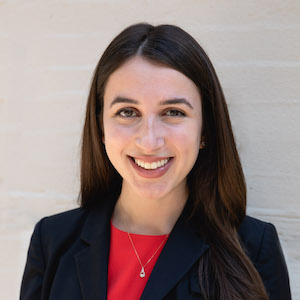
Jessica L. Kang

Jiahui Li

Nicolette J. Almer

Douglas Kim

Hyeran H. Jeon
 Jessica L. Kang |  Jiahui Li |  Nicolette J. Almer |  Douglas Kim |  Hyeran H. Jeon |
Kang, Jessica L., Li, Jiahui, Almer, Nicolette J., Kim, Douglas
Faculty / Advisor: Jeon, Hyeran H
University of Pennsylvania School of Dental Medicine, Department of Orthodontics
The goal of this study is to examine whether the deletion of ciliary protein IFT80 in osteocytes significantly affects alveolar bone remodeling during orthodontic tooth movement (OTM) through RANKL and/or sclerostin regulation.
Methods10-12 week-old DMP1.Cre+.IFT80f/f mice (experimental) and DMP1.Cre-.IFT80f/f mice (control) were examined. A 25 g force was applied by a NiTi coil and maintained for 5 or 12 days. We measured the OTM distance, bone mineral density and bone volume fraction using microCT. We also counted the osteoclast numbers in TRAP-stained sections. Expression of the RANKL and sclerostin was measured by immunofluorescence stain. Statistical analysis was performed using 2-tailed Students t-test or ANOVA with Scheffe's post-hoc test (p<0.05).
ResultsOTM Distance: Teeth in WT group moved 56.46 ± 8.17µm on day 5 and 100.46 ± 13.43µm on day 12 (p<0.05). There was no statistically significant difference between experimental and control group on both day 5 and day 12 (p>0.05). BMD and BV/TV: On day 12, WT mice had a 33% reduction in BV/TV with orthodontic appliance (0.587 ± 0.092) versus unloaded side (0.882 ± 0.028, p<0.05), and a 13% decrease in BMD (1106 ± 19.2 mg HA/ccm) with orthodontic force versus unloaded side (965 ± 46.6 mg HA/ccm, p<0.05). There was no statistically significant difference between experimental and control group (p>0.05). Osteoclast number and Expression of RANKL and Sclerostin: There was no statistically significant difference between experimental and control group in the osteoclast number and expression of RANKL and sclerostin on day 5 (p>0.05).
ConclusionDiscussion: - Too small space for osteocyte cilia in vivo o The pericellular space within osteocyte lacunae ranges from 0.1-2.7 μm. o Osteocyte primary cilium extends 4–9 μm in length based on in vitro observations. - Other possible bone mechanosensing mechanisms Conclusions: - IFT80 deletion in osteocytes did not significantly affect alveolar bone remodeling during orthodontic tooth movement.